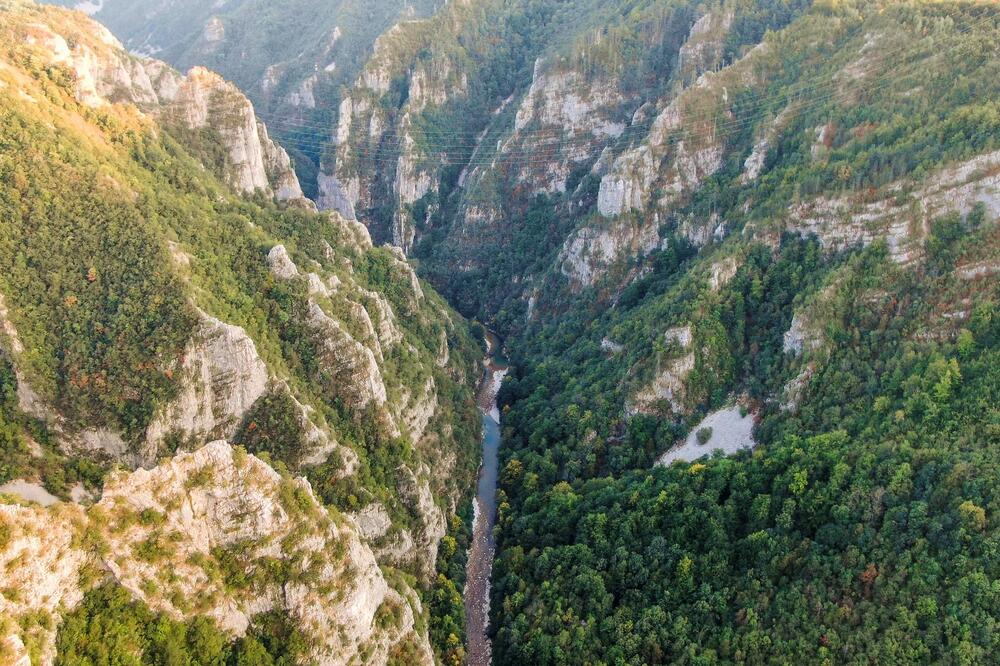The construction of a hydroelectric power plant on Komarnica would irreversibly devastate the nature of the canyon that the river created over thirty million years. The battle to preserve this gem of nature and stop the devastation of the canyon, which has an inestimable value, has already heated up, and it is being led by civil and eco-activists whose goal is to get the Electric Power Company of Montenegro to abandon the plan approved by the Government - the construction of a hydroelectric power plant on Komarnica.
"Freedom to Komarnica" - it was written on the banner that yesterday the residents of several villages spread above the place where the construction of the dam is planned.
The Montenegrin Society of Ecologists (CDE) explains to "Vijesti" how disastrous this investment is, what Montenegro would lose by building a dam, how to revive Duži, Dubrovsko, Brezna and other villages, but also what is the alternative to provide electricity. without endangering the environment.
CDE and the activists of the Civic Initiative "Save Komarnica" planned to gather from April 30 to May 3 all those who see Komarnica as an invaluable natural and public asset.
"On those days, some of us will go through the most beautiful corners of Komarnica in kayaks, pack rafts, hiking, fishing and photo tours will be organized, and everyone will be able to take a peek at the mini art colony that will be part of the action. In addition to an active tour of the canyon, workshops are part of the action - the exchange of facts and ideas about the natural, touristic and other values of the Komarnica canyon, and all its potential that these values make possible", said the CDE, adding that the presence was confirmed by defenders of nature from regions and Europe:
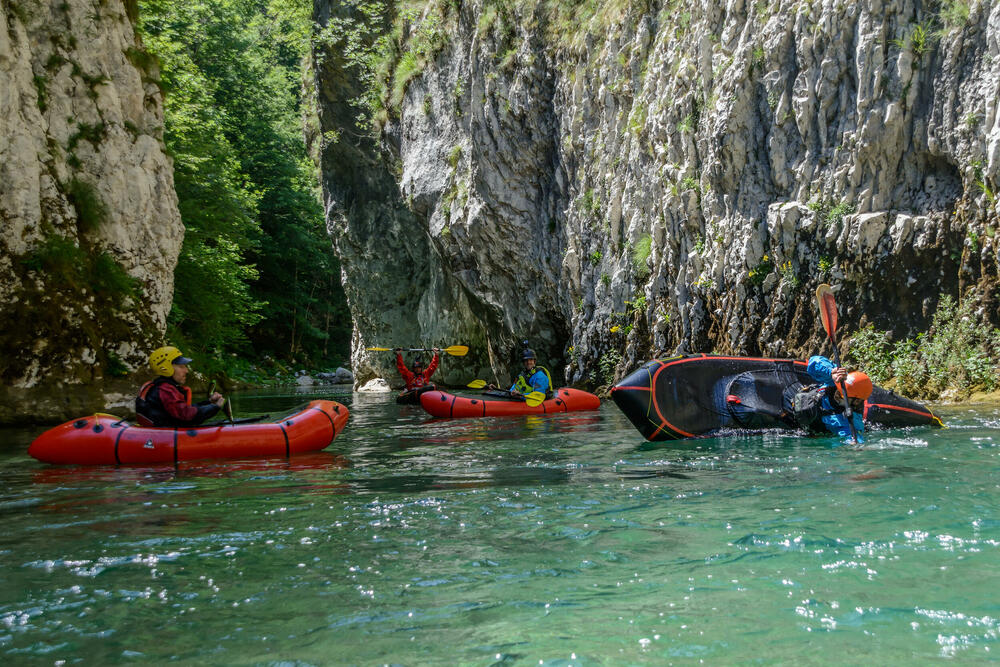
"Who will come with us to meet, enjoy Komarnica and send a message that we will defend our most valuable resources, but also that we will leave them for those who come after us as they left them to us".
They explain that the action is of a volunteer type and that with it they want to return and direct "our time and attention to nature":
What does Montenegro lose?
CDE points out that the construction of the dam would irreversibly devastate the nature of the Komarnica canyon, but that it is crucial to clarify what kind of nature it is.
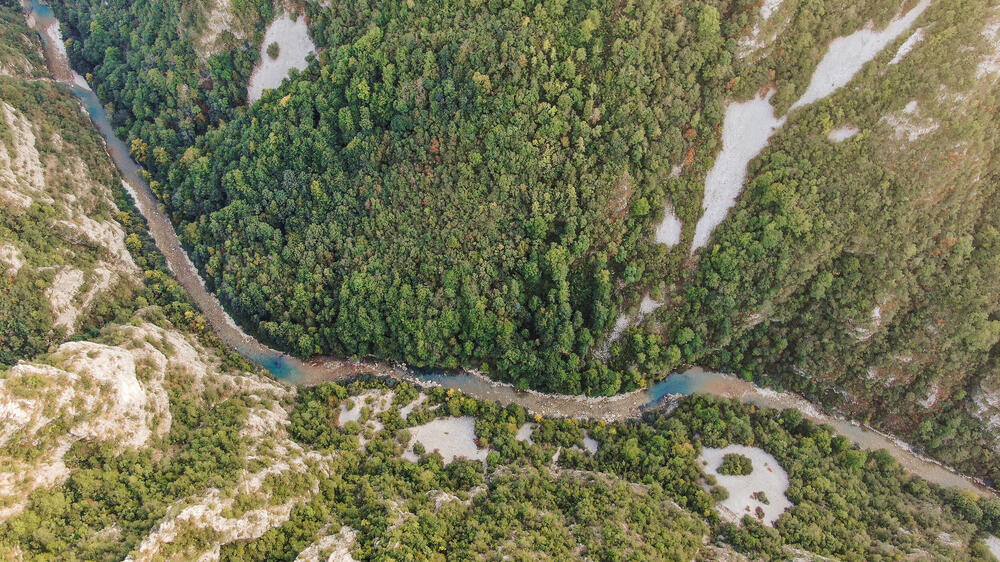
"The mosquito net has been creating this canyon for 30 million years under very specific conditions. For comparison, the human species arose about 2,5 million years ago, and modern man about 400 thousand years ago. The wealth of biodiversity that Komarnica has been creating for such a long time is not only reflected in the number of species, communities, habitats and ecosystems. The crown of the wealth of biodiversity and the natural whole of the canyon is reflected precisely in the uniqueness and uniqueness of some of these species, communities, but also entire ecosystem units, as well as a special unique combination that is only possible in a canyon of this type", says the CDE.
They point out that the most important thing is to understand that what Komarnica created, and what would be lost by sinking, cannot be replaced:
"In the Komarnica canyon lives a complex combination and wealth of living world, that is, a network of ecosystems that is so specific that it is unrepeatable, and that in case of loss, that disappearance is irreversible... This canyon is not a vertical wasteland of empty rocks and unreachable water. It is a complex mosaic of ecological units, ecosystems, in which heat-loving and cold-loving species live".
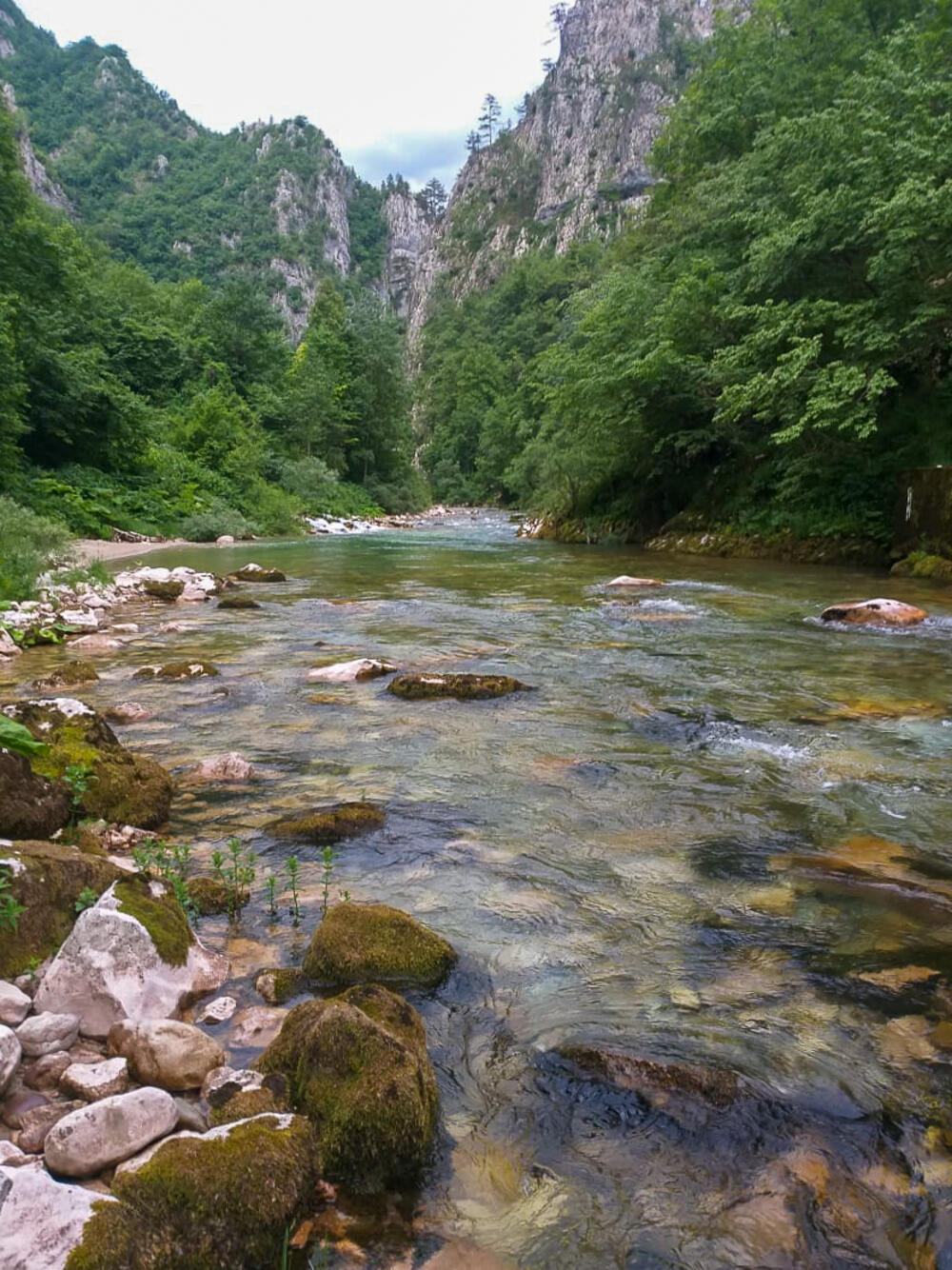
Having explained that such canyons have the character of a refuge, the so-called refugial character and that, during climate crises, in the mosaic of ecosystems of those canyons, the most diverse species take shelter and thus survive, they said that this happened during the Ice Age:
"That is why today in the Komarnica canyon we have a high percentage of endemic species, both rare and relict... The percentage of endemism of plants that inhabit the rocks in this area reaches as much as 50 percent".
The river was recognized by UNESCO and UCN
CDE reminds that Komarnica is a Nature Monument, Nature Park, nominated Emerald area and that according to the criteria of the European Union, parts of the river should be declared Natura 2000 areas:
"According to the Habitats Directive and the Birds Directive, which means that these areas are of importance to the entire European community," they said, adding that by granting the concession for the construction of HPP Komarnica, the Government directly violated the provisions of the Berne Convention, according to which the area was nominated as EMERALD, and that because of this they filed a complaint with the Secretariat of the Berne Convention.
Their complaint has been accepted as valid and they say they expect the Secretariat of the Berne Convention to send a group of independent experts who will make an assessment of the factual situation on the spot.
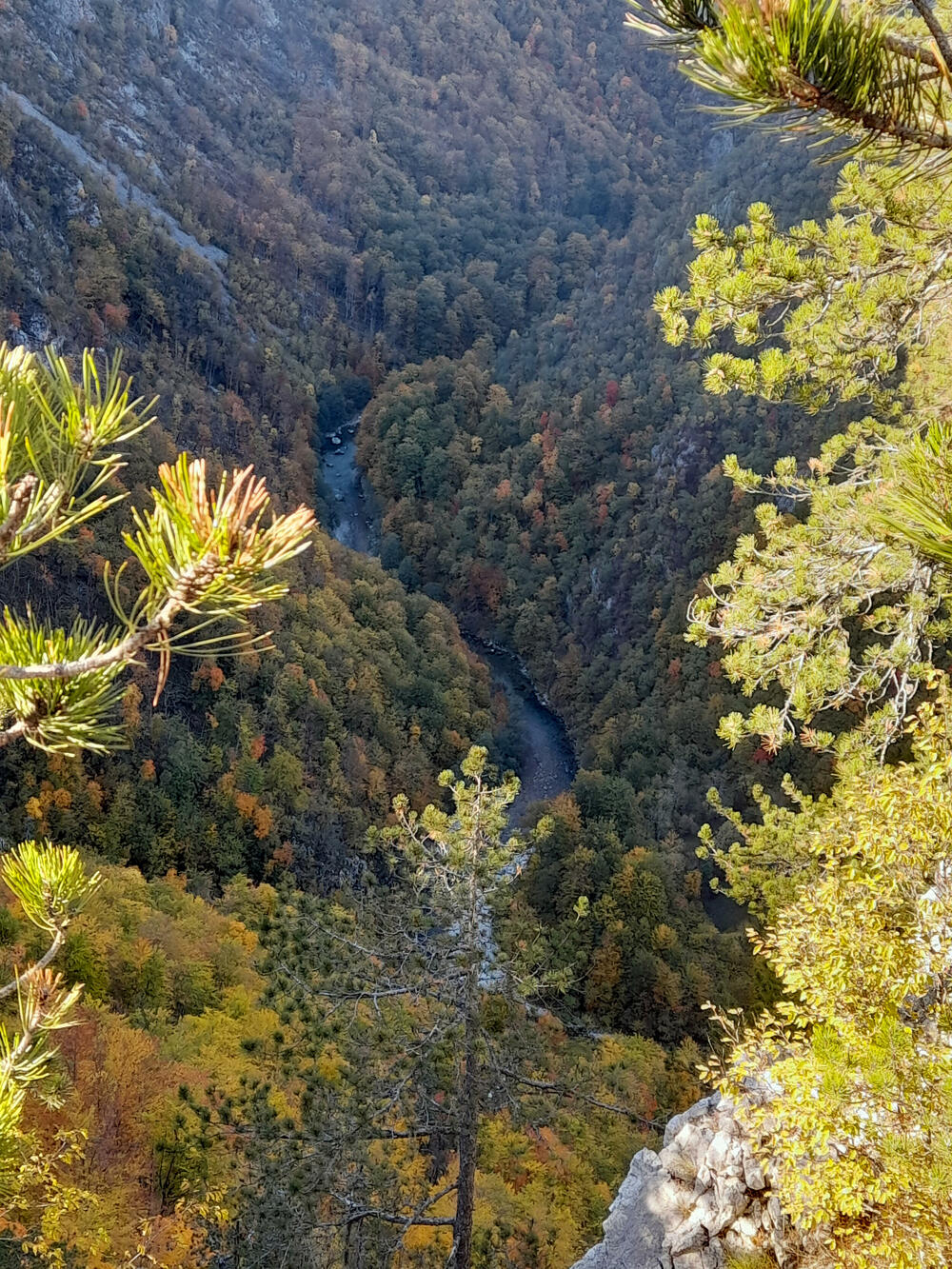
"In addition to all that, the value of the Komarnica area has been recognized by UNESCO and IUCN (International Union for the Conservation of Nature), which proposed it for raising the level of its protection to the level of a national park and joining it to the already existing UNECSO area of Durmitor and Tara".
This means that the area of Komarnica is recognized as one of 257 in the world that are already under the mantle of natural world heritage.
Enumerating the peculiarities and importance of protecting that river, its canyon, but also the entire area, they said that it is crazy to lose such an important and rich area by approving an "apparently risky project":
"In the sense that the Government and EPCG are greatly 'pushing' its implementation, and the project from all angles looks like a huge, expensive experiment, which looks like spoiled play with our nature, in this case one of the most attractive, most preserved and most special canyons in Europe".
They assessed that it is questionable why EPCG is still hiding the basic documentation "if the project is as good as they announce it", adding that the company has not yet submitted either the contract or the conceptual design.
They explain that there is an alternative and that the energy independence of Montenegro is possible if the country uses several sources of energy - sun, wind, hydrogen technology, water, but that we are currently too dependent on water:
"That's why we need to focus on other much more sustainable, green energy sources".
There is no progress without a free river
The development of a village is possible when the local population cultivates and improves local food production and if it nurtures domestic crafts such as handicraft shops on which the tourist offer can be based, the CDE points out, adding that the chance for the revival of villages in the area of Komarnica is the tourist offer based on preserved nature , free river and agricultural production:
"It is an opportunity that has not been used at all in Montenegro, and it is becoming one of the most sought after in the world. This scenario is realized when the locals become involved in the village development program and the overall rural tourism offer. Lifestyle as a type of tourist offer, local food, cultural heritage, local crafts through innovation are a chance to revive the villages of Duži, Dubrovski, Brezan and other villages".
They point out that the potential for the development of clean, sustainable tourism is currently being exploited mainly by foreigners:
"Who buy land and on it create tourist stories based on man and nature".
The dam blocks the development of the village and its addition to the UNESCO list
If the Municipality of Savnik and Montenegro allows Komarnica to become part of the UNESCO area, it would certainly become one of the most visited areas in the northern part of Montenegro, such as Durmitor with Tara and Boka Kotorska, thanks to the fact that they are on the world map of the UNESCO area. they say from CDE.
They explain that the world heritage areas are one of the most valuable brands of the country, adding that it is unclear to them why the Municipality of Šavnik deprived its region of that development chance.
"Montenegro is already known worldwide for Nevidio Canyon (which is actually the upper course of Komarnica), and that is only thanks to the transmission of enthusiasm and impressions by word of mouth, because we do nothing to promote this incredible area ourselves. Only because of this part of Komarnica, Montenegro is visited by at least 3.000 people every year".
Bonus video:



